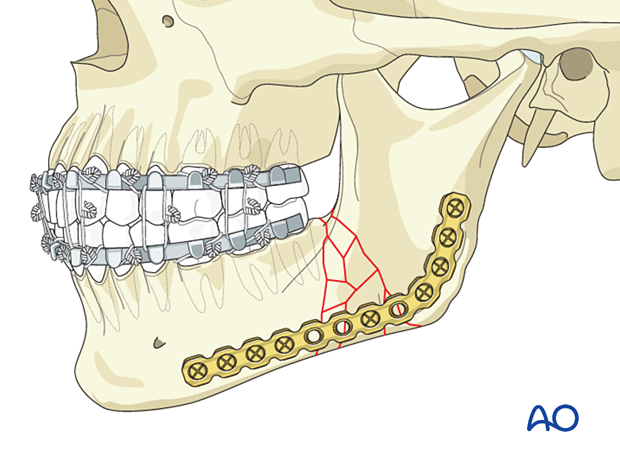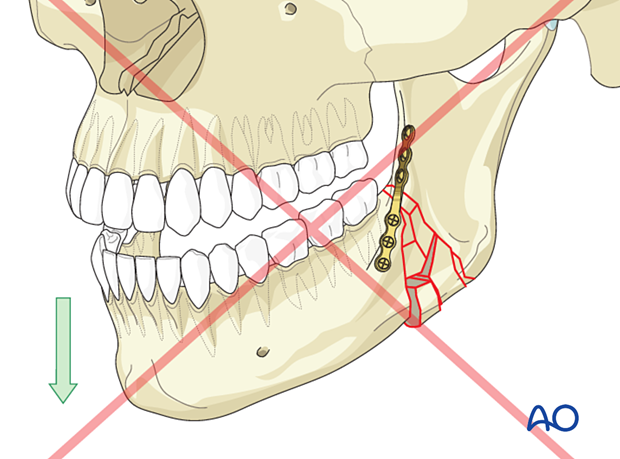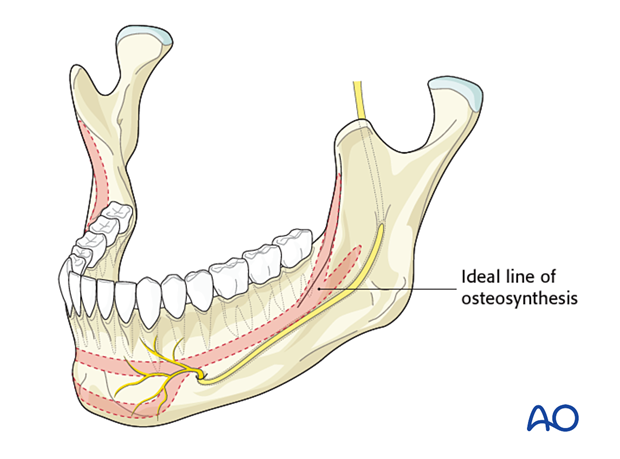Load bearing vs load sharing
1. Load bearing osteosynthesis (stabilization by splinting)
Load bearing requires large and rigid plates as they bear all the forces of function at the fracture site and provide absolute stability.
Load bearing is accomplished using reconstruction plates, ideally in combination with locking screws.
It is needed in cases with bone fragment instability (eg, due to a comminuted fracture, mandibular defect) or insufficient bone stock.
Clinical uses include the management of atrophic edentulous fractures, comminuted fractures, the necessity to span an infected bone segment, and other complex mandibular fractures.

2. Load-sharing osteosynthesis
General consideration
Load-sharing osteosynthesis allows the use of smaller plates (relative stability) due to the buttressing provided by the intact cortecies on either side of a simple fracture. The green arrows represent load sharing that occurs at the angle of the mandible.

Load-sharing osteosynthesis cannot be used with defect fractures or comminuted fractures due to the fracture site's lack of bony buttressing.

Ideal lines of osteosynthesis
Maxime Champy popularized the treatment of mandible fractures with miniplate fixation along the ideal lines of osteosynthesis. This approach is a form of load-sharing osteosynthesis applied in simple fracture patterns with an acceptable amount of bone stock.
Click here for a description of the biomechanics of the mandible.














